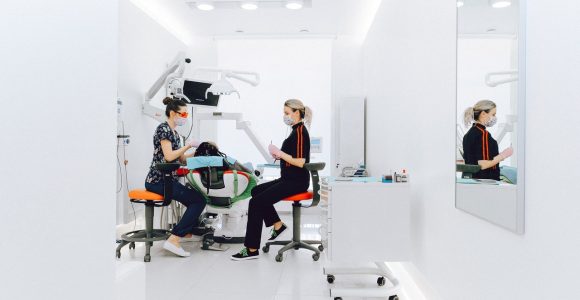Open bites: symptoms and treatment options


Open bites of all kinds are very common; when looking at teeth, usually at the front, they do not make contact when the molars are touching. Sometimes from a cursory inspection, this is not obvious because one set of teeth overlaps in front of the other. A common test to distinguish an open bite of your teeth is this: while attempting to push your tongue forwards, if it can be pushed between a gap in your teeth while you are biting down, your bite is considered to be ‘open’.
Daily symptoms of open bites
Many patients live comfortably day to day with their open bite, only truly noticing it when eating certain types of food like a ham sandwich, where the filling can be left behind as the bread is already stripped away. But most patients will unconsciously develop an eating style, like tearing food with the canines in order to compensate, without ever being fully aware of how open their bite is.
For others they might suffer constant stress, not because of the clinical effect of their open bite but the visual impact on the front teeth and how predominantly they can extend in front of the normal dental arch. This can be crippling to self-confidence.
Causes of open bites
A mixture of environmental and genetic factors can cause open bites and it is often a combination of the two; pacifiers or sucking your thumb can start an open bite in childhood. The open bite can also be attributed to an improper bite, or other jaw-related issues. With permanent teeth imitating the location of children’s teeth, the open bite can be fixed in place in adulthood.
Is orthodontic treatment the answer?
The treatment of an open bite solely depends on its cause, which is a deciding factor when it comes to treatment. There is a whole range of useful treatments available in order to apply the necessary devices to alter the position of the teeth, closing the gaps. The effectiveness of these will depend on the severity of the misalignment. If the teeth are misaligned due to an overbite or an underbite, the treatment will likely include corrective surgery to affix the jaw in a more standard positioning. If molars have to be moved, a traditional metal brace may be the only option. If not, clear aligners like Invisalign London can be a more convenient solution.

Are there other treatments without orthodontic intervention?
A patient living with a misaligned jaw may be well-accustomed to living their everyday life with an open bite. This often causes them to suffer from symptoms that include the wear and tear of the enamel, and the shifting of teeth. As a result, they may also develop breathing difficulties, speech impairments, or clenching. The open bite, paired with jaw abnormality, should be a case that is corrected with the help of orthognathic surgery rather than orthodontic. The alignment of teeth can later be fixed through orthodontic solutions.
With younger patients, intervention is often unnecessary as behavioural changes, like reducing pacifier use can be effective. Unfortunately, for severe open bites in particular, this window seems to close over time, with more radical and eventually surgical options being required. So, where possible, treat them and if your child has been diagnosed with an open bite, regularly attend a nearby clinic so that orthodontic correction, if required, can start in early adolescence when their adult teeth first come in.
For adults wanting to assess their treatment options, it is important that they have a consultation with a qualified practitioner who can deduce the severity of their misalignment. Most minor misalignment can be corrected by a course of treatment using clear aligners; this would not only meet the convenience and low visual impact required of working professionals, but could also be the cheaper option compared to the adult costs of traditional metal braces.
Remember, this does vary significantly and you should not hesitate to shop around to find the appropriate practitioner and at a fair price.



